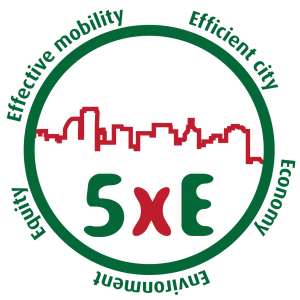Posts tagged Value
Improving railway passengers experience: two perspectives
This paper describes two perspectives to improve the passenger experience. The passenger satisfaction pyramid is introduced, consisting of the base of the pyramid (dissatisfiers) focusing on time well saved and the top of the pyramid (satisfiers) aiming at time well spent. The challenge in planning and design of public transport services is to find the most efficient (set of) design choices. Depending on the context this might either mean focusing on the top or on the bottom of the pyramid. We found that influencing and enhancing the qualities of the satisfiers is far more important than traditional studies showed us. For stations, regression analyses show that dissatisfiers are responsible for explaining almost half of the total score of the station and satisfiers are responsible for the other half of the scores passengers give for the station. We still have to put a lot of energy in getting the basics right, starting in the planning phase, but then we are not allowed to lean back. We have to keep investing in qualities like ambience, comfort and experience which makes the customers truly happy at the end of the day.
Van B naar Anders
Op woensdag 30 mei organiseerde de Rli naar aanleiding van zijn advies een symposium. Tijdens dit symposium is het advies toegelicht en met betrokkenen uit de mobiliteitswereld besproken. Daarbij wordt stilgestaan bij de toekomst van mobiliteit en infrastructuur, de bestuurlijke praktijk en bij innovatie en verduurzaming van ons mobiliteitssysteem.
Vind alle bijdragen en verslag HIER
De presentatie over de toekomst van mobiliteit van Niels van Oort vind je HIER
Wat gaat MaaS ons brengen?
MaaS congres 2018: Niels van Oort is assistant professor public transport aan de TU Delft en doet onderzoek naar de effecten van nieuwe vervoerssytemen. Hij gaat de mogelijke impact van MaaS op reizigers en maatschappij toelichten, met voorbeelden van verschillende pilots en onderzoeken.
Zie HIER zijn bijdrage aan het MaaS congres 2018
The wider benefits of high quality of public transport for cities
The full value of public transport is often underestimated. The 5E framework, consisting of effective mobility, efficient city, economy, environment and equity supports assessing and quantifying this value. This paper presents the framework and a wide selection of sources illustrating the wider benefits of high quality of public transport for cities.
Find our ETC conference paper HERE

The wider benefits of high quality public transport for cities
The true value of public transport is often underestimated systematically while assessing transit impacts of proposed projects. During the planning and assessment of new or improved connections, infrastructure or services, often only the costs of operations, construction and the revenues with regard to fares and travel time savings are accounted for. This approach provides insights into the performance of public transport to some extent, but disregards many other (positive) effects the provision of public services has. Many of which impose an advantage over competing modes of transport. This could result in the postponement or even cancellation of plans, as means are scarce and invested where gains are directly visible. Thus, to enable a fairer assessment of public transport plans, more insight is required into the wider benefits of its operations and impacts on passengers and the environment.
To gain these insights, we developed a methodology to quantify the value of public transport using the five E’s: Effective mobility, Efficient city, Economy, Environment and Equity. Together these aspects provide a better indication of all potential benefits of public transport.
Read more in this ETC 2017 conference paper.

